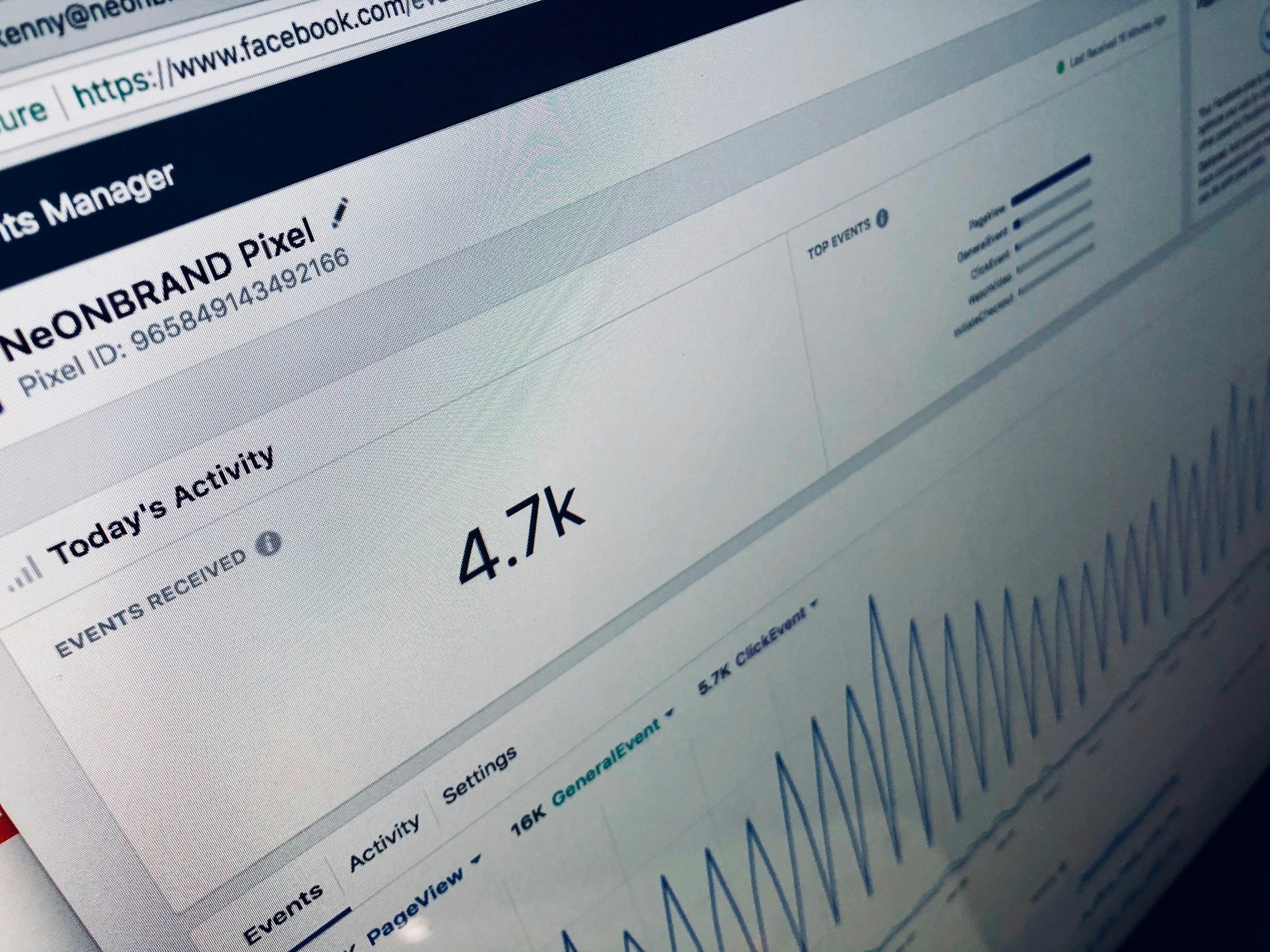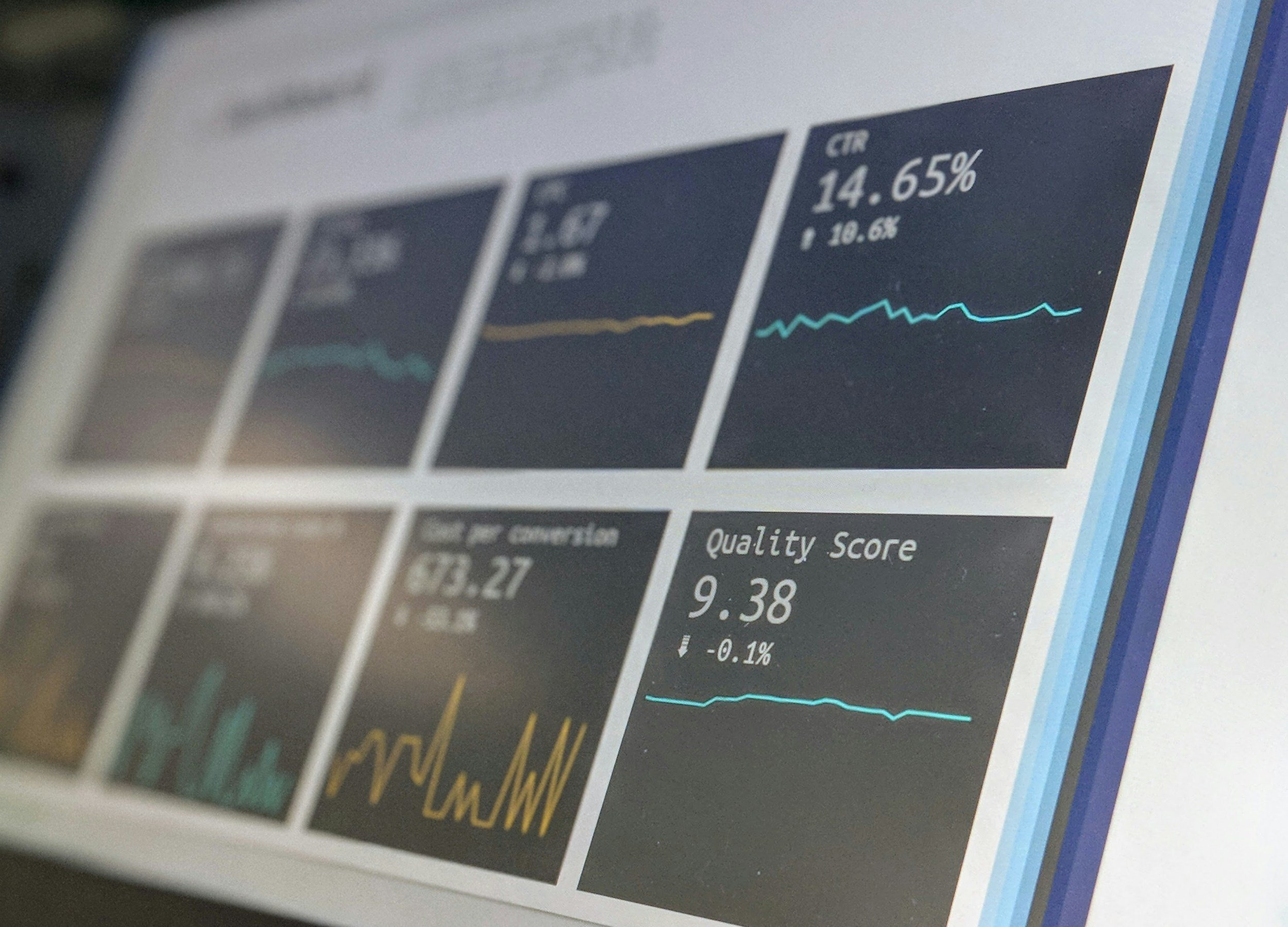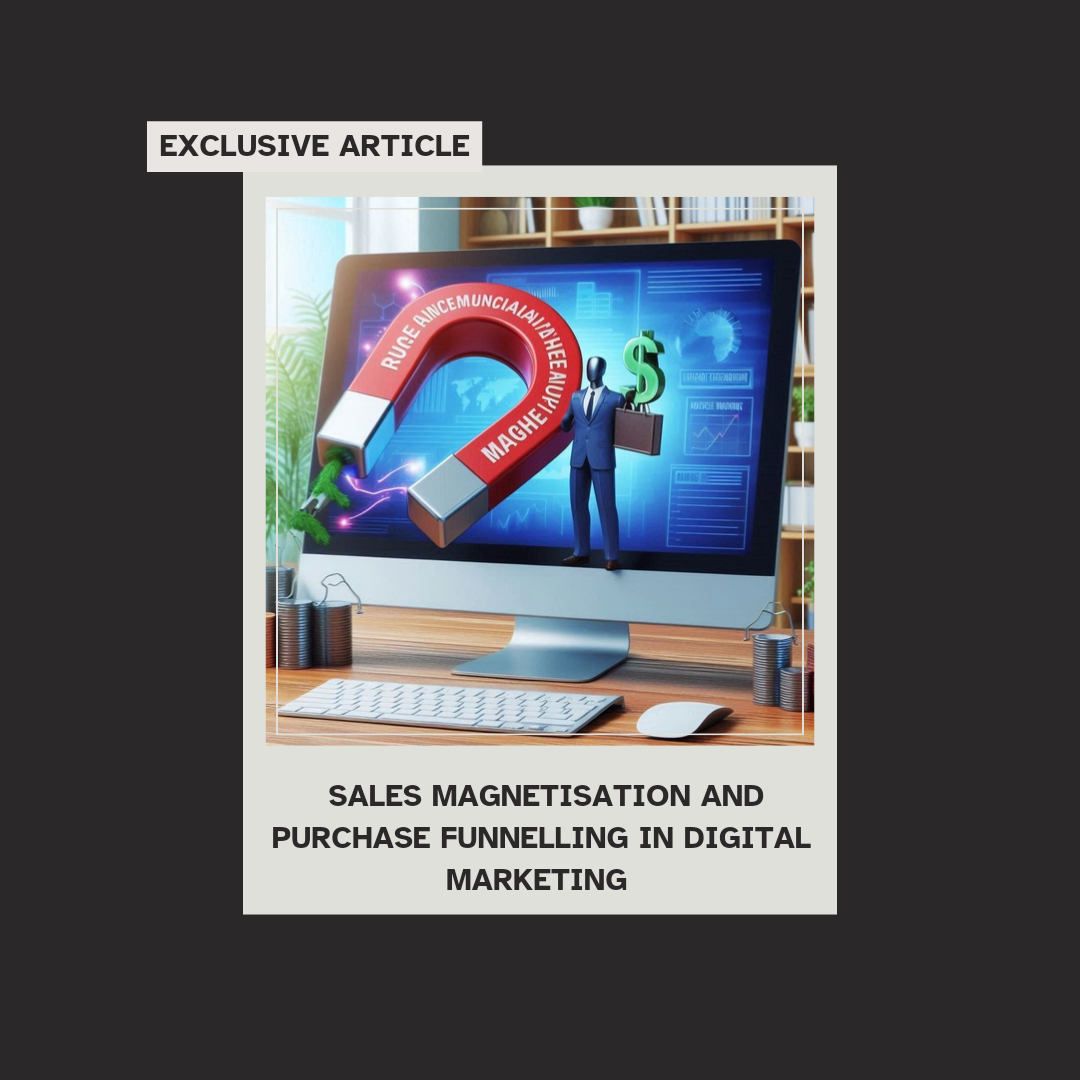Articles
Business and the Economy
EXCLUSIVE
ARTICLES
Make an impact today
Support my free content by contributing a donation.

The Power of Long-Tail and Short-Tail SEO Keywords for Websites and Blogs
In the realm of digital marketing, both long-tail and short-tail SEO keywords play critical roles in driving traffic and enhancing a website's visibility. Understanding their unique benefits can empower businesses and bloggers to devise effective content strategies.
Short-tail keywords, typically consisting of one or two words, such as "SEO" or "digital marketing," tend to attract a higher search volume. While they may generate significant traffic, competition for these keywords is fierce. As a result, ranking highly for short-tail keywords can be challenging, often requiring substantial resources and a well-established online presence.
Conversely, long-tail keywords are more specific, usually comprising three or more words, such as "how to improve SEO for small business" or "best practices for digital marketing in Australia." These keywords generally attract less search traffic but offer greater conversion potential. Users employing long-tail keywords are often further along in the buying cycle, seeking targeted information that aligns closely with their specific needs. By optimizing for these phrases, websites can attract a more engaged audience, resulting in higher conversion rates.
Integrating both short-tail and long-tail keywords into a content strategy allows businesses to tap into varying levels of search intent. A balanced approach can help optimize visibility for broader search queries while also capturing niche audiences that convert
In the realm of digital marketing, both long-tail and short-tail SEO keywords play critical roles in driving traffic and enhancing a website's visibility. Understanding their unique benefits can empower businesses and bloggers to devise effective content strategies.
Short-tail keywords, typically consisting of one or two words, such as "SEO" or "digital marketing," tend to attract a higher search volume. While they may generate significant traffic, competition for these keywords is fierce. As a result, ranking highly for short-tail keywords can be challenging, often requiring substantial resources and a well-established online presence.
Conversely, long-tail keywords are more specific, usually comprising three or more words, such as "how to improve SEO for small business" or "best practices for digital marketing in Australia." These keywords generally attract less search traffic but offer greater conversion potential. Users employing long-tail keywords are often further along in the buying cycle, seeking targeted information that aligns closely with their specific needs. By optimizing for these phrases, websites can attract a more engaged audience, resulting in higher conversion rates.
Integrating both short-tail and long-tail keywords into a content strategy allows businesses to tap into varying levels of search intent. A balanced approach can help optimize visibility for broader search queries while also capturing niche audiences that convert. As such, understanding and leveraging the strengths of both types of keywords is essential for any effective online marketing strategy.

The Market Analysis in Market Dynamics
Market analysis is a crucial element of understanding market dynamics, as it provides a comprehensive view of the competitive landscape, consumer behavior, and key trends affecting an industry. By systematically examining various factors such as market size, growth potential, and segmentation, businesses can identify opportunities and threats that could impact their strategic decisions.
A well-conducted market analysis begins with the assessment of current market conditions. This includes evaluating both macroeconomic indicators—such as GDP growth, inflation rates, and employment statistics—and microeconomic factors that pertain specifically to the industry, including supply chain logistics, pricing strategies, and consumer demand. By analyzing these elements, businesses can gauge the prevailing market sentiment and predict future movements.
Segmentation analysis also plays a pivotal role in market dynamics. By dividing the market into distinct groups based on demographics, buying behaviors, and preferences, organizations can tailor their products and marketing strategies to meet the specific needs of each segment. This targeted approach not only enhances customer satisfaction but also optimizes resource allocation and maximizes potential returns.
Understanding competitive forces is another critical aspect of market analysis. Insight into competitors’ strengths, weaknesses, market shares, and strategies allows businesses to position themselves effectively within the market. Tools such as SWOT analysis can be employed to assess internal capabilities against external market pressures, helping firms to establish a competitive edge.
Furthermore, market trends and consumer behaviors are continuously evolving. Regularly updating market analysis is essential for organizations to remain adaptable and responsive. This involves monitoring changes in technology, regulatory frameworks, and even cultural shifts that may influence buying patterns. By staying attuned to these dynamics, businesses can innovate and pivot their strategies accordingly, ensuring sustained growth and relevance in an ever-changing marketplace.
In summary, a thorough market analysis is an invaluable tool in navigating market dynamics, enabling businesses to make informed decisions and strategically position themselves for success.

Identifying and Understanding Competitive Market Differentiation
In a saturated marketplace, identifying and understanding competitive market differentiation is crucial for businesses striving to establish a unique value proposition. Competitive differentiation involves recognizing the attributes that set a company’s offerings apart from its rivals. This process begins with comprehensive market research to analyse competitors’ strengths and weaknesses, as well as pinpointing gaps in the market that can be exploited.
Businesses should consider several factors when differentiating themselves, including product quality, customer service, brand messaging, and pricing strategies. For instance, a company may choose to focus on premium quality materials and craftsmanship, appealing to discerning customers willing to pay a higher price for superior products. Alternatively, businesses might differentiate through exceptional customer service, fostering loyalty and creating a competitive edge.
Another avenue for differentiation lies in innovation—whether it’s through new technology, unique product designs, or pioneering service delivery methods. Companies that prioritize research and development can usher in groundbreaking solutions that challenge industry norms and enhance customer experiences.
To effectively communicate these differentiators, organizations must develop a clear and compelling brand narrative that resonates with their target audience. This narrative should encapsulate the essence of the brand, its mission, and the unique benefits customers can expect. Engaging storytelling not only captures attention but also builds a strong emotional connection with consumers.
In summary, identifying and understanding competitive market differentiation requires a strategic approach that encompasses in-depth market analysis, a focus on unique value drivers, and the effective communication of brand strengths. By leveraging these elements, businesses can carve out a distinctive niche in the marketplace, ultimately driving growth and sustainability.

Unveiling Consumer Spending Habits
Consumer spending habits play a critical role in shaping economic trends and guiding business strategies. As the landscape of consumerism evolves, understanding these habits becomes essential for organizations aiming to meet the needs of their target markets.
A notable shift has occurred in the wake of the COVID-19 pandemic, as Australians reassess their spending priorities. The emphasis has notably shifted towards essential goods and services, with a marked increase in spending on health, home improvements, and digital services. In contrast, discretionary spending, such as luxury items and experiences, has seen fluctuations as consumers adopt a more conservative approach to their finances.
Furthermore, the rise of digital shopping has fundamentally changed the retail experience. Consumers are increasingly favoring online platforms for their convenience and variety. They seek seamless experiences, where aspects such as fast delivery, easy returns, and personalized recommendations significantly influence their purchasing decisions.
Sustainability has emerged as a key consideration in consumer purchasing behavior. More Australians are willing to pay a premium for products that are eco-friendly and ethically sourced, reflecting a growing awareness of environmental issues and social responsibility.
In light of these trends, businesses must remain agile, adapting their marketing strategies and product offerings to resonate with the evolving values and preferences of consumers. As the market continues to mature, insights into consumer spending habits will be
Consumer spending habits play a critical role in shaping economic trends and guiding business strategies. As the landscape of consumerism evolves, understanding these habits becomes essential for organizations aiming to meet the needs of their target markets.
A notable shift has occurred in the wake of the COVID-19 pandemic, as Australians and others reassess their spending priorities. The emphasis has notably shifted towards essential goods and services, with a marked increase in spending on health, home improvements, and digital services. In contrast, discretionary spending, such as luxury items and experiences, has seen fluctuations as consumers adopt a more conservative approach to their finances.
Furthermore, the rise of digital shopping has fundamentally changed the retail experience. Consumers are increasingly favoring online platforms for their convenience and variety. They seek seamless experiences, where aspects such as fast delivery, easy returns, and personalized recommendations significantly influence their purchasing decisions.
Sustainability has emerged as a key consideration in consumer purchasing behavior. More Australians and others are willing to pay a premium for products that are eco-friendly and ethically sourced, reflecting a growing awareness of environmental issues and social responsibility.
In light of these trends, businesses must remain agile, adapting their marketing strategies and product offerings to resonate with the evolving values and preferences of consumers. As the market continues to mature, insights into consumer spending habits will be invaluable for driving growth and ensuring long-term viability.

How to Best Conduct Basic Competitive and Comparative Analysis
Conducting a competitive and comparative analysis is essential for businesses seeking to understand their position in the market and identify strategic opportunities. Here are key steps and considerations for effective execution:
Define Your Objectives and Scope
Start by clearly outlining what you wish to achieve with the analysis. Are you exploring new market entrants, enhancing product features, or seeking pricing strategies? Knowing your objectives will streamline your analysis and keep it focused.Identify Competitors
Develop a comprehensive list of direct and indirect competitors. Direct competitors offer similar products or services, while indirect competitors may solve the same customer problem through alternative means. Use industry reports, market research, and online tools to gather this information.Gather Data
Employ a variety of methods to collect data on your competitors. This can include:Website Analysis: Review their website for product offerings, pricing, and customer reviews.
Social Media Monitoring: Observe the engagement and strategies competitors use on platforms like Facebook, Instagram, and LinkedIn.
Customer Feedback: Assess reviews and testimonials on platforms like Google and industry-specific sites to understand customer sentiment.
Sales and Financial Reports: If available, analyze competitors’ financial performance to gauge their market position.
Perform SWOT Analysis
For each competitor, conduct a SWOT analysis (Strengths, Weaknesses, Opportunities, Threats). This helps in understanding where they excel and where they may be vulnerable, providing insights into potential market openings for your business.Benchmark Key Performance Indicators (KPIs)
Determine relevant KPIs for your analysis, such as market share, pricing strategies, customer acquisition costs, and customer satisfaction scores. Benchmark these metrics against your own performance to identify areas for improvement.Compare Offerings
Develop a comparison matrix to highlight differences and similarities in product features, pricing, and customer service. This visual representation can help in identifying unique selling propositions (USPs) and competitive advantages.Analyze Market Positioning
Assess how competitors position themselves in the market. Understand their branding, customer targeting, and messaging strategies. This will not only highlight competitive threats but also potential gaps in the market that your business can address.Synthesize Findings and Develop Strategic Recommendations
After analyzing the data, synthesize your findings into actionable insights. Recommend strategic responses based on the analysis, such as product development, repositioning, or marketing approaches to outpace competitors.
By systematically conducting competitive and comparative analysis, businesses not only gain critical insights into the competitive landscape but also equip themselves to make informed strategic decisions that can drive growth and enhance market positioning.

Leveraging Business Trends and Financial Forecasts
In today’s dynamic marketplace, leveraging business trends and financial forecasts has become essential for organizations aiming to secure a competitive edge. Understanding prevailing trends allows companies to anticipate shifts in consumer behavior, technological advancements, and industry standards, thereby enabling them to adapt proactively rather than reactively.
Financial forecasts play a critical role in this strategy. By analysing historical data and identifying emerging market indicators, businesses can project future performance, assess potential risks, and allocate resources more effectively. This proactive approach not only aids in budget planning but also informs strategic decision-making, allowing leaders to pivot quickly in response to changing conditions.
For instance, the rise of sustainable practices has fundamentally altered consumer expectations across various sectors. Companies that monitor such trends and incorporate sustainability into their value proposition not only enhance their brand reputation but also attract a growing segment of environmentally conscious buyers. Furthermore, robust financial forecasting can illuminate the viability of investing in green technologies or sustainable supply chains, minimising risk while capitalising on new opportunities.
Moreover, leveraging data analytics tools can significantly enhance the accuracy of both trend analysis and financial forecasting. By utilising real-time data, businesses can refine their strategies continually, ensuring that their initiatives are aligned with market demands and financial realities.
In conclusion, the synthesis of business trends and financial forecasts is not merely a strategic advantage; it is a prerequisite for long-term success in an ever-evolving economic landscape. Embracing this approach empowers businesses to
In today's dynamic marketplace, leveraging business trends and financial forecasts has become essential for organizations aiming to secure a competitive edge. Understanding prevailing trends allows companies to anticipate shifts in consumer behavior, technological advancements, and industry standards, thereby enabling them to adapt proactively rather than reactively.
Financial forecasts play a critical role in this strategy. By analyzing historical data and identifying emerging market indicators, businesses can project future performance, assess potential risks, and allocate resources more effectively. This proactive approach not only aids in budget planning but also informs strategic decision-making, allowing leaders to pivot quickly in response to changing conditions.
For instance, the rise of sustainable practices has fundamentally altered consumer expectations across various sectors. Companies that monitor such trends and incorporate sustainability into their value proposition not only enhance their brand reputation but also attract a growing segment of environmentally conscious buyers. Furthermore, robust financial forecasting can illuminate the viability of investing in green technologies or sustainable supply chains, minimizing risk while capitalizing on new opportunities.
Moreover, leveraging data analytics tools can significantly enhance the accuracy of both trend analysis and financial forecasting. By utilizing real-time data, businesses can refine their strategies continually, ensuring that their initiatives are aligned with market demands and financial realities.
In conclusion, the synthesis of business trends and financial forecasts is not merely a strategic advantage; it is a prerequisite for long-term success in an ever-evolving economic landscape. Embracing this approach empowers businesses to navigate uncertainties with greater agility, ultimately leading to sustainable growth and profitability.
Additional resource inside*

The Impact of Complex and Lengthy Customer Service on E-commerce Sales
In the fast-paced world of e-commerce, the efficiency and effectiveness of customer service play a critical role in shaping the overall customer experience. Complex and lengthy customer service processes can significantly hinder sales, as consumers increasingly value convenience and rapid resolution. When online shoppers encounter intricate procedures or extensive waiting times to resolve issues, their dissatisfaction can lead to abandoned carts, negative reviews, and ultimately, a decrease in repeat customers.
The impact of cumbersome customer service is compounded in an era where consumers have high expectations for instantaneous support. Modern shoppers are inclined to seek out brands that provide seamless communication channels and responsive service. If a system is perceived as convoluted, it not only frustrates customers but also communicates a lack of commitment to their needs. In contrast, an efficient customer service strategy can enhance customer loyalty and promote positive word-of-mouth, which are essential for sustained e-commerce growth.
Furthermore, when customer service interactions become a barrier rather than an aid, businesses risk losing prospective clients to competitors who prioritize simplicity and customer satisfaction. E-commerce platforms must recognize that investing in streamlined, user-friendly customer service systems is crucial in retaining customers and boosting overall sales. By leveraging technology such as AI-driven chatbots and comprehensive FAQs, businesses can foster a more intuitive customer experience and significantly mitigate the negative repercussions of complex
In the fast-paced world of e-commerce, the efficiency and effectiveness of customer service play a critical role in shaping the overall customer experience. Complex and lengthy customer service processes can significantly hinder sales, as consumers increasingly value convenience and rapid resolution. When online shoppers encounter intricate procedures or extensive waiting times to resolve issues, their dissatisfaction can lead to abandoned carts, negative reviews, and ultimately, a decrease in repeat customers.
The impact of cumbersome customer service is compounded in an era where consumers have high expectations for instantaneous support. Modern shoppers are inclined to seek out brands that provide seamless communication channels and responsive service. If a system is perceived as convoluted, it not only frustrates customers but also communicates a lack of commitment to their needs. In contrast, an efficient customer service strategy can enhance customer loyalty and promote positive word-of-mouth, which are essential for sustained e-commerce growth.
Furthermore, when customer service interactions become a barrier rather than an aid, businesses risk losing prospective clients to competitors who prioritize simplicity and customer satisfaction. E-commerce platforms must recognize that investing in streamlined, user-friendly customer service systems is crucial in retaining customers and boosting overall sales. By leveraging technology such as AI-driven chatbots and comprehensive FAQs, businesses can foster a more intuitive customer experience and significantly mitigate the negative repercussions of complex service processes.

The Power of Lead Magnets in Content Marketing
Lead magnets are indispensable tools in content marketing, acting as powerful incentives that drive potential customers to engage further with your brand. A well-crafted lead magnet, such as an eBook, whitepaper, or exclusive webinar, offers tangible value in exchange for contact information, effectively bridging the gap between visitor engagement and conversion.
The strength of lead magnets lies in their ability to address specific pain points or interests of your target audience. By delivering content that resonates deeply with their needs, businesses can cultivate a sense of trust and authority. This approach not only increases the likelihood of capturing valuable leads but also sets the stage for nurturing these connections through targeted follow-up communication.
Moreover, lead magnets facilitate segmentation of your audience. By analyzing the type of content that attracts specific demographics, businesses can tailor their marketing strategies, ensuring that future communications are relevant and personalized. This level of targeted marketing enhances the efficiency of customer acquisition efforts and fosters long-term loyalty.
Ultimately, the strategic use of lead magnets transforms the traditional sales funnel into a more interactive and engaging experience, empowering businesses to not only capture leads but also to educate and inform potential customers, leading them closer to a purchasing decision. By harnessing the power of lead magnets, companies can significantly improve their content marketing effectiveness and drive sustainable growth.
Lead magnets are indispensable tools in content marketing, acting as powerful incentives that drive potential customers to engage further with your brand. A well-crafted lead magnet, such as an eBook, whitepaper, or exclusive webinar, offers tangible value in exchange for contact information, effectively bridging the gap between visitor engagement and conversion.
The strength of lead magnets lies in their ability to address specific pain points or interests of your target audience. By delivering content that resonates deeply with their needs, businesses can cultivate a sense of trust and authority. This approach not only increases the likelihood of capturing valuable leads but also sets the stage for nurturing these connections through targeted follow-up communication.
Moreover, lead magnets facilitate segmentation of your audience. By analyzing the type of content that attracts specific demographics, businesses can tailor their marketing strategies, ensuring that future communications are relevant and personalized. This level of targeted marketing enhances the efficiency of customer acquisition efforts and fosters long-term loyalty.
Ultimately, the strategic use of lead magnets transforms the traditional sales funnel into a more interactive and engaging experience, empowering businesses to not only capture leads but also to educate and inform potential customers, leading them closer to a purchasing decision.

How to Streamline and Improve Supply Chain Efficiency for Competitive Online Advantage
Streamlining and improving supply chain efficiency is crucial for businesses looking to gain a competitive edge in the online marketplace. Here are key strategies to enhance your supply chain operations:
Embrace Technology and Automation: Investing in advanced technologies such as Artificial Intelligence (AI), Internet of Things (IoT), and machine learning can significantly improve supply chain efficiencies. These technologies enable real-time tracking of inventory, predictive analytics for demand forecasting, and automation of repetitive tasks, thereby reducing lead times and operational costs.
Optimize Inventory Management: Implementing just-in-time (JIT) inventory systems can minimize excess stock and reduce holding costs. Combine this with robust data analytics to predict demand more accurately, ensuring that you have the right amount of stock when needed, thus avoiding stock0outs or overstock situations.
Strengthen Supplier Relationships: Developing strong relationships with suppliers can lead to better communication, collaboration, and flexibility. Establishing clear expectations, sharing demand forecasts, and engaging in joint planning can enhance responsiveness and improve overall supply chain performance.
Streamline Logistics and Distribution: Evaluate your logistics network to identify inefficiencies. Consolidating shipments, choosing the most efficient shipping routes, and exploring third-party logistics (3PL) providers can lead to reduced transit times and lower costs. Additionally, adopting an omnichannel distribution strategy allows for more efficient fulfilment of online orders.
Focus on Sustainability: Incorporating sustainable practices within your supply chain can appeal to environmentally conscious consumers. This might involve choosing eco-friendly packaging, reducing waste, and optimizing transportation methods to lower carbon footprints. A sustainable supply chain can also enhance brand loyalty and differentiate your business in a crowded marketplace.
Continuous Improvement Culture: Foster a culture of continuous improvement by regularly reviewing and analyzing supply chain processes. Embrace methodologies like Lean and Six Sigma to identify areas for improvement, eliminate waste, and enhance operational efficiency. Engaging employees at all levels in this process can lead to innovative solutions and a more agile supply chain.
By implementing these strategies, businesses can create a more efficient and responsive supply chain, ultimately leading to enhanced customer satisfaction
Streamlining and improving supply chain efficiency is crucial for businesses looking to gain a competitive edge in the online marketplace. Here are key strategies to enhance your supply chain operations:
Embrace Technology and Automation: Investing in advanced technologies such as Artificial Intelligence (AI), Internet of Things (IoT), and machine learning can significantly improve supply chain efficiencies. These technologies enable real-time tracking of inventory, predictive analytics for demand forecasting, and automation of repetitive tasks, thereby reducing lead times and operational costs.
Optimize Inventory Management: Implementing just-in-time (JIT) inventory systems can minimize excess stock and reduce holding costs. Combine this with robust data analytics to predict demand more accurately, ensuring that you have the right amount of stock when needed, thus avoiding stock-outs or overstock situations.
Strengthen Supplier Relationships: Developing strong relationships with suppliers can lead to better communication, collaboration, and flexibility. Establishing clear expectations, sharing demand forecasts, and engaging in joint planning can enhance responsiveness and improve overall supply chain performance.
Streamline Logistics and Distribution: Evaluate your logistics network to identify inefficiencies. Consolidating shipments, choosing the most efficient shipping routes, and exploring third-party logistics (3PL) providers can lead to reduced transit times and lower costs. Additionally, adopting an omnichannel distribution strategy allows for more efficient fulfilment of online orders.
Focus on Sustainability: Incorporating sustainable practices within your supply chain can appeal to environmentally conscious consumers. This might involve choosing eco-friendly packaging, reducing waste, and optimizing transportation methods to lower carbon footprints. A sustainable supply chain can also enhance brand loyalty and differentiate your business in a crowded marketplace.
Continuous Improvement Culture: Foster a culture of continuous improvement by regularly reviewing and analyzing supply chain processes. Embrace methodologies like Lean and Six Sigma to identify areas for improvement, eliminate waste, and enhance operational efficiency. Engaging employees at all levels in this process can lead to innovative solutions and a more agile supply chain.
By implementing these strategies, businesses can create a more efficient and responsive supply chain, ultimately leading to enhanced customer satisfaction and a significant competitive advantage in the online marketplace.

The Impact of Sustained Economic Growth, Business Expansion, and Discretionary Marketing in an Online Enterprise
Sustained economic growth plays a pivotal role in shaping the landscape of online enterprises. When an economy is prospering, disposable income rises, leading to increased consumer spending. This shift enables online businesses to expand their operations, diversify their offerings, and invest in marketing strategies that leverage the heightened purchasing power of consumers.
In an environment characterised by sustained economic growth, businesses are often encouraged to scale their operations. This may involve expanding product lines, exploring new markets, or enhancing technological capabilities. For online enterprises, these expansions allow them to meet the growing demands of a more affluent customer base, positioning themselves as competitive players in a crowded marketplace.
Furthermore, the concept of discretionary marketing becomes increasingly significant during periods of economic prosperity. With more funds available for marketing initiatives, businesses are empowered to adopt innovative digital strategies, such as influencer collaborations, targeted social media campaigns, and advanced data analytics. This enables them to engage with consumers in a more personalised manner, enhancing brand loyalty and driving repeat sales.
However, it is crucial for businesses to approach expansion and marketing with a strategic mindset. While growth can provide opportunities, it also carries risks, including overextension and market saturation. Thus, careful analysis and planning are essential to ensure that the benefits of sustained economic growth are maximised without compromising the integrity of the online enterprise. The interplay of these factors underscores the importance of a rigorous approach to management and a keen understanding of market dynamics as businesses navigate the evolving economic landscape.
Sustained economic growth plays a pivotal role in shaping the landscape of online enterprises. When an economy is prospering, disposable income rises, leading to increased consumer spending. This shift enables online businesses to expand their operations, diversify their offerings, and invest in marketing strategies that leverage the heightened purchasing power of consumers.
In an environment characterised by sustained economic growth, businesses are often encouraged to scale their operations. This may involve expanding product lines, exploring new markets, or enhancing technological capabilities. For online enterprises, these expansions allow them to meet the growing demands of a more affluent customer base, positioning themselves as competitive players in a crowded marketplace.
Furthermore, the concept of discretionary marketing becomes increasingly significant during periods of economic prosperity. With more funds available for marketing initiatives, businesses are empowered to adopt innovative digital strategies, such as influencer collaborations, targeted social media campaigns, and advanced data analytics. This enables them to engage with consumers in a more personalised manner, enhancing brand loyalty and driving repeat sales.
However, it is crucial for businesses to approach expansion and marketing with a strategic mindset. While growth can provide opportunities, it also carries risks, including overextension and market saturation. Thus, careful analysis and planning are essential to ensure that the benefits of sustained economic growth are maximised without compromising the integrity of the online enterprise. The interplay of these factors underscores the importance of a rigorous approach to management and a keen understanding of market dynamics as businesses navigate

How To Optimize and Identify Behavioral Changes and Industrial Trends in Online Marketing
In the evolving landscape of online marketing, understanding and optimizing behavioral changes and industrial trends is critical for businesses aiming to maintain competitive advantage. A systematic approach to identifying these behavioral shifts begins with robust data analytics. Utilizing tools such as Google Analytics, social media insights, and customer feedback can provide invaluable information on user interactions and preferences.
Businesses should focus on analyzing engagement metrics, such as click-through rates and time spent on site, to detect subtle changes in consumer behavior. Segmenting audiences based on demographics, purchasing patterns, and engagement levels allows marketers to tailor their strategies accordingly.
Simultaneously, staying attuned to industry trends, such as shifts towards sustainability or increased demand for personalized marketing, is essential. Regularly reviewing market research reports and competitor analysis can help identify these trends early. Engaging in continuous learning through webinars, industry conferences, and networking with peers enables marketers to remain agile in a rapidly changing environment.
Implementing A/B testing for marketing campaigns fosters a culture of experimentation. Marketers can compare different versions of content or ads to determine which resonates better with their audience. This iterative process not only refines current strategies but also uncovers potential emerging trends dictated by consumer preferences.
Finally, leveraging customer relationship management (CRM) systems can enhance a company’s ability to predict behavioral changes through the analysis of historical data. By integrating insights gathered from various touchpoints, businesses can create a holistic view of the customer journey, enabling them to adapt and optimize their marketing efforts proactively.
In summary, the successful optimization and identification of behavioral changes and industrial trends in online marketing hinges on a combination of data analysis, industry research, audience segmentation, and a willingness to iterate and innovate based on real-time feedback and performance
In the evolving landscape of online marketing, understanding and optimizing behavioral changes and industrial trends is critical for businesses aiming to maintain competitive advantage. A systematic approach to identifying these behavioral shifts begins with robust data analytics. Utilizing tools such as Google Analytics, social media insights, and customer feedback can provide invaluable information on user interactions and preferences.
Businesses should focus on analyzing engagement metrics, such as click-through rates and time spent on site, to detect subtle changes in consumer behavior. Segmenting audiences based on demographics, purchasing patterns, and engagement levels allows marketers to tailor their strategies accordingly.
Simultaneously, staying attuned to industry trends, such as shifts towards sustainability or increased demand for personalized marketing, is essential. Regularly reviewing market research reports and competitor analysis can help identify these trends early. Engaging in continuous learning through webinars, industry conferences, and networking with peers enables marketers to remain agile in a rapidly changing environment.
Implementing A/B testing for marketing campaigns fosters a culture of experimentation. Marketers can compare different versions of content or ads to determine which resonates better with their audience. This iterative process not only refines current strategies but also uncovers potential emerging trends dictated by consumer preferences.
Finally, leveraging customer relationship management (CRM) systems can enhance a company’s ability to predict behavioural changes through the analysis of historical data. By integrating insights gathered from various touchpoints, businesses can create a holistic view of the customer journey, enabling them to adapt and optimize their marketing efforts proactively.
In summary, the successful optimization and identification of behavioral changes and industrial trends in online marketing hinges on a combination of data analysis, industry research, audience segmentation, and a willingness to iterate and innovate based on real-time feedback and performance metrics.

How Aggregate Supply and Demand Reflects The Market Deficit of an Online Business
In the context of online businesses, aggregate supply and demand play pivotal roles in determining market equilibrium and subsequently the presence of market deficits. Aggregate supply represents the total output of goods and services that online businesses are willing to produce at various price levels, while aggregate demand reflects the total quantity of products that consumers are willing to purchase.
When an online business experiences a market deficit, it occurs when aggregate demand exceeds aggregate supply. This imbalance may stem from various factors, such as rapid shifts in consumer preferences, seasonal trends, or insufficient product availability. For instance, if a popular online retailer fails to anticipate a surge in demand for a newly launched product, it may quickly find itself unable to meet customer expectations. This inadequacy not only erodes customer trust but can also lead to lost sales opportunities.
Moreover, market deficits in an online business can signal underlying issues such as supply chain constraints or inefficiencies in inventory management. For example, disruptions caused by logistical challenges or increased shipping times can impede an online business's ability to provide adequate supply. Consequently, it becomes essential for these businesses to adopt real-time analytics and demand forecasting tools to maintain a more accurate alignment between supply and demand.
Understanding the dynamics of aggregate supply and demand allows online businesses to adapt their strategies effectively. By leveraging data-driven insights, businesses can optimize their operational processes, ensuring that they not only meet existing consumer demand but also anticipate shifts that may arise in the marketplace. Additionally, implementing flexible pricing strategies can help mitigate the impacts of supply shortages, thereby stabilizing revenues during periods of heightened demand.
Ultimately, awareness of aggregate supply and demand enables online businesses to navigate market deficits proactively, ensuring sustained growth and competitiveness in an increasingly dynamic digital landscape.


